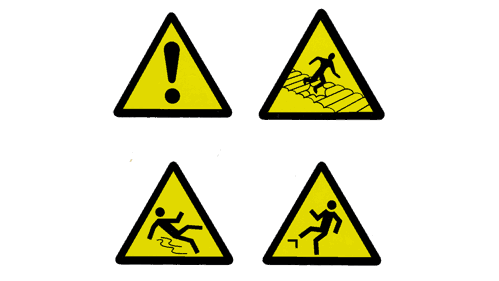Last year, Sam’s Club lost an appeal for the third time in a personal injury action that awarded a woman $1 million for injuries she sustained in a New Jersey store. The woman had been hit in the leg with a flatbed cart.
“Viewed in the light most favorable to plaintiff, the evidence makes clear plaintiff suffered disfiguring scarring, numbness, ongoing constant pain, and impairment of the use of her leg,” the New Jersey Appellate Division wrote in their February 2018 decision, Newton v. Sam’s Club. “Defendant has not clearly and convincingly established that the damage award is a miscarriage of justice. To be sure, this was a high verdict, but that does not mean it was excessive.”
[text_ad use_post=’125303′]
With such eye-popping verdicts still being handed out, retail store safety—and getting employees to follow all the steps on your retail store safety checklist—is critical. Even a small mistake, like the one that led to the million-dollar verdict against Sam’ Club, can be a costly. In the case, a 72-year-old woman was struck in the leg by a flatbed cart loaded with boxes of chicken wings pushed by another customer (which a Sam’s Club employee had retrieved for the customer).
How can a retail company reduce the risk of injuries? Such a question is clearly too simplistic to answer.
What a retail organization can do to cut injuries depends on what it has already done, its risks, and where it is along the safety management continuum.
But the question “what did you do to cut injuries?,” while unable to provide universally applicable answers, can help to highlight real-world examples of safety success.
We’ve researched the question and put it to a range of companies—and unearthed several ideas for addressing common safety challenges. Loss prevention executives may want to review these steps for a retail store safety checklist to see if any actions that other companies have found helpful might prevent their next injury—and perhaps a million-dollar jury award.
1. Identify new equipment as “not ready for use” until it receives the necessary “okays.” One director of health and safety thinks his company’s simple “red tag procedure” has helped to prevent equipment from posing an unnecessary workplace hazard. As soon as a piece of equipment comes into a facility, receives a modification, or moves from one department to another, it receives a red tag indicating that it is off limits until it receives the necessary signatures from personnel with the authority to sign off.
2. Don’t try to change workers’ minds until you know what’s in them. Anytime you provide a safety training session or try to implement new safety procedure, success is hit or miss unless you understand the way workers currently address the situation in question. “Giving information is like throwing spaghetti on the wall: you have no idea what will stick until after you’ve thrown it,” explained one safety training consultant.
LP directors must appreciate that workers currently live within a system and, even if it doesn’t work well, that a safety intervention is a disruption to that system. She says that workers do not make a decision to adopt new work methods based on the specific data or information they are given; rather, they decide based on how it applies to their values, beliefs, and history (the system). Retail safety leaders need to tailor safety training to that system if they want workers to incorporate the information when they are back performing their job duties.
3. Look for real-life training examples. After several hand injuries, including severe lacerations, tip amputations, and fractures, one company enlisted the victims of injuries to lead safety meetings and an open discussion on past incidents, nip and pinch points, and what the loss of a hand could mean to their lives and their families. “It was one of the most effective meetings that I’ve been involved in,” the safety director said, who added that they’ve conducted the same training without injured employees but that they had less impact.
Other companies said they drove safety success by including items like these on their retail store safety checklist :
- Moving hazard warning signs and safety message signs around. After six months in a single location, a safety sign probably doesn’t even register with employees. If allowed, move such signs to a slightly different location so workers notice them again.
- Giving employees education on how to adjust their office chairs. One company said they deployed a new line of highly adjustable office chairs for workers but found that many of them never changed the factory setting because they weren’t sure how to operate the controls.
- Providing employees with an online portal where they can report safety problems, fill out reports, and make safety suggestions.
- Providing a training feedback form at the conclusion of safety training. A safety director can’t know what works and what doesn’t without affording workers the opportunity to evaluate safety training programs.
- Including safety performance data in each employee’s annual review.
- Conducting a weekly safety teleconference with senior managers.
- Assigning each new worker to a “safety buddy” for the first month of work.
This post was originally published in 2018 and was updated April 1, 2019.





